Related Research Articles

3DO is a video gaming hardware format developed by The 3DO Company and conceived by entrepreneur and Electronic Arts founder Trip Hawkins. The specifications were originally designed by Dave Needle and RJ Mical of New Technology Group, and were licensed by third parties; most hardware were packaged as home video game consoles under the name Interactive Multiplayer, and Panasonic produced the first models in 1993 with further renditions released afterwards by manufacturers GoldStar, Sanyo, Creative Labs, and Samsung Electronics.

Road Rash is a motorcycle racing video game series by Electronic Arts in which the player participates in violent, illegal street races. The series started on the Sega Genesis/Mega Drive and was released on various other systems over the years. The game's title is based on the slang term for the severe friction burns that can occur in a motorcycle fall where skin comes into contact with the ground at high speed.

Road Rash 3D is a racing video game developed and published by Electronic Arts exclusively for the PlayStation.

Primal Rage is a fighting game developed and released by Atari Games for arcades in 1994. The game takes place on a post-apocalyptic version of Earth called "Urth". Players control one of seven prehistoric beasts, that battle each other to determine the planet's fate. Matches feature many of the conventions of fighting games from the era, including special moves and gory finishing maneuvers. Ports were released for home video game consoles and personal computers. Efforts to perfectly emulate the arcade original have been unsuccessful due to the use of an unusual copy protection method. Toys, comics, a novel and other merchandise tie-ins were produced. More than 1.5 million copies of the game were sold.

Olympic Summer Games is an official video game of the Atlanta 1996 Olympic Games. It is the successor to Olympic Gold and Winter Olympics. It was the last "Olympic" video game released for the fourth generation of consoles, as well as the Game Boy.

Magic Carpet is a 3D flying video game developed by Bullfrog Productions and published by Electronic Arts in 1994 for MS-DOS, PlayStation, and Sega Saturn platforms. Its graphics and gameplay were considered innovative and technically impressive at the time of its release.
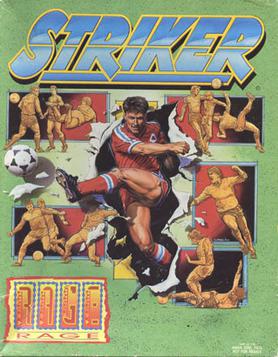
Striker is a soccer video game series first released by Rage Software in 1992.
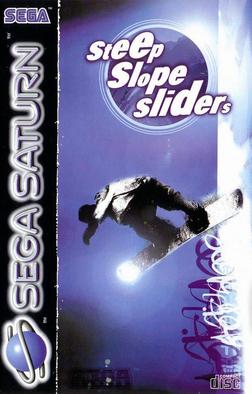
Steep Slope Sliders is a game that was made for the Sega Saturn and Sega Titan ST-V arcade system, published in 1997. It was developed by a collaboration of Victor Interactive Software, and the Cave Company. The game was released by Victor Interactive Software in Japan and by Sega in other territories. Capcom released the arcade version. The game was met with positive reviews, drawing favorable comparison to other snowboarding video games for its sharp graphics, innovative design, and intuitive control system.

Madden NFL 98 is a 1997 football video game. It was the last edition of the Madden series to be released for the Super NES, Genesis and Sega Saturn platforms, as well as the last Madden game to utilize 2D sprites for the players and referee, on 3D playing fields.
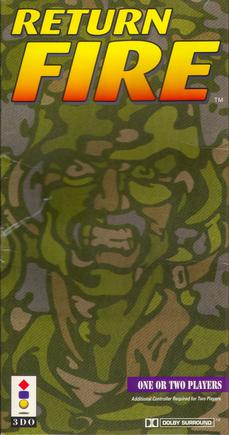
Return Fire is a 1995 video game developed by Silent Software, Inc. for 3DO and ported to the Microsoft Windows and PlayStation in 1996. It is a sequel to Fire Power (1987) and was followed by Return Fire 2 (1998). An expansion pack, Return Fire: Maps O' Death, was released for the 3DO in 1995. Return Fire is a vehicular shooter from a 3D bird's eye view, in which the player's goal is to capture the enemy flag and return with it to their base. It was met with critical acclaim for its unusual gameplay concept, enjoyable multiplayer mode, and classical soundtrack, and is remembered as one of the 3DO's "best games" in its Home of the Underdogs entry.
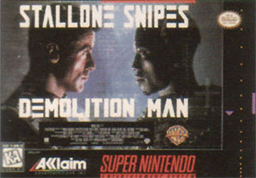
Demolition Man is a pair of action video games based on the film of the same name. Acclaim Entertainment published the 16-bit version, which features run and gun gameplay, for the Super NES, Sega Genesis and Sega CD. Virgin Interactive released a completely different game for the 3DO that combined several distinct gameplay styles. In both games, the player controls John Spartan, the main character from the film, as he attempts to find and defeat his nemesis, Simon Phoenix.

Waterworld is a series of video games released for the Super Nintendo Entertainment System, Virtual Boy, MS-DOS, Microsoft Windows and Game Boy, based on the film of the same name, along with unpublished versions for the Mega Drive/Genesis, Sega Saturn, Atari Jaguar, 3DO and PlayStation. These games were produced by Ocean Software. The SNES and Game Boy games were released only in Europe in 1995 and the Virtual Boy game was released exclusively in North America in November 1995. It was released for PC in 1997. The game received widespread negative reviews and the version released for the Virtual Boy is generally considered to be the worst game of its 22 releases.

The Need for Speed is a 1994 racing game developed by EA Canada, originally known as Pioneer Productions, and published by Electronic Arts for 3DO. It was later ported to other platforms with additional tracks and cars, including to MS-DOS, PlayStation, Sega Saturn, and Microsoft Windows in 1996, on which it was subtitled SE.

NHL 97 is an ice hockey video game by EA Sports. It was released in 1996 and was the successor to NHL 96. It is the sixth installment of the NHL series and the first to be released on both PlayStation and Saturn. A Panasonic M2 version was in development and slated to be one of the launch titles for it, but never happened due to the cancellation of the system.

Shockwave Assault is a science fiction combat flight simulation video game developed by Advanced Technology Group and published by Electronic Arts for various home video game consoles and PCs. The player takes control of a futuristic fighter plane to defeat extraterrestrial ships and tripods.

BattleSport is a 1996 futuristic sports video game developed by Cyclone Studios. It was originally published by Studio 3DO exclusively for their 3DO Interactive Multiplayer in 1996, but after the 3DO was discontinued BattleSport was published for other systems by Acclaim Entertainment. It was released for Windows and PlayStation, Sega Saturn, and Windows in North America in July 1997, and in Europe on August 1, 1997.

FIFA Soccer 96 is a football video game developed by Extended Play Productions and released by Electronic Arts in 1995. It was released for the Mega Drive/Genesis, Sega Saturn, Sega 32X, Game Gear, PlayStation, Super Nintendo Entertainment System, and MS-DOS compatible operating systems.
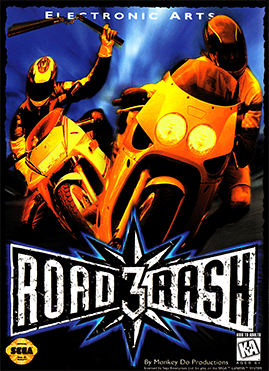
Road Rash 3 is a 1995 racing and vehicular combat video game developed and published by Electronic Arts (EA) for the Sega Genesis. It is the fourth installment in the Road Rash series and the last to be released for the Genesis, as well as the last EA title to be developed for the Genesis. The game is centered around a worldwide series of motorcycle races that the player must win to advance to higher-difficulty races, while engaging in unarmed and armed combat to hinder the other racers.

Road Rash is a 1994 racing and vehicular combat video game originally published by Electronic Arts (EA) for the 3DO Interactive Multiplayer. A version for the Sega CD was developed simultaneously and released in 1995 to act as a "bridge" between the 3DO version and the Sega Genesis title Road Rash 3, and the game was subsequently ported to the PlayStation, Sega Saturn, and Microsoft Windows in 1996. The game is the third installment in the Road Rash series, and is centered around a series of motorcycle races throughout California that the player must win to advance to higher-difficulty races, while engaging in unarmed and armed combat to hinder the other racers.
References
- 1 2 3 4 5 6 7 8 GamePro , June 1996 page 30
- 1 2 3 Sega Saturn Magazine
- 1 2 3 4 5 6 7 8 9 Next Generation November 1995, page 110-111
- 1 2 3 4 Mean Machines Sega , August 1995, page 15
- 1 2 3 4 Sega Zone , December 1993, pages 17-20
- ↑ CD Consoles, January 1996, page 11
- 1 2 MegaForce, Issue 52 (Summer 1996), page 44
- 1 2 Games Master , January 1997, page 70